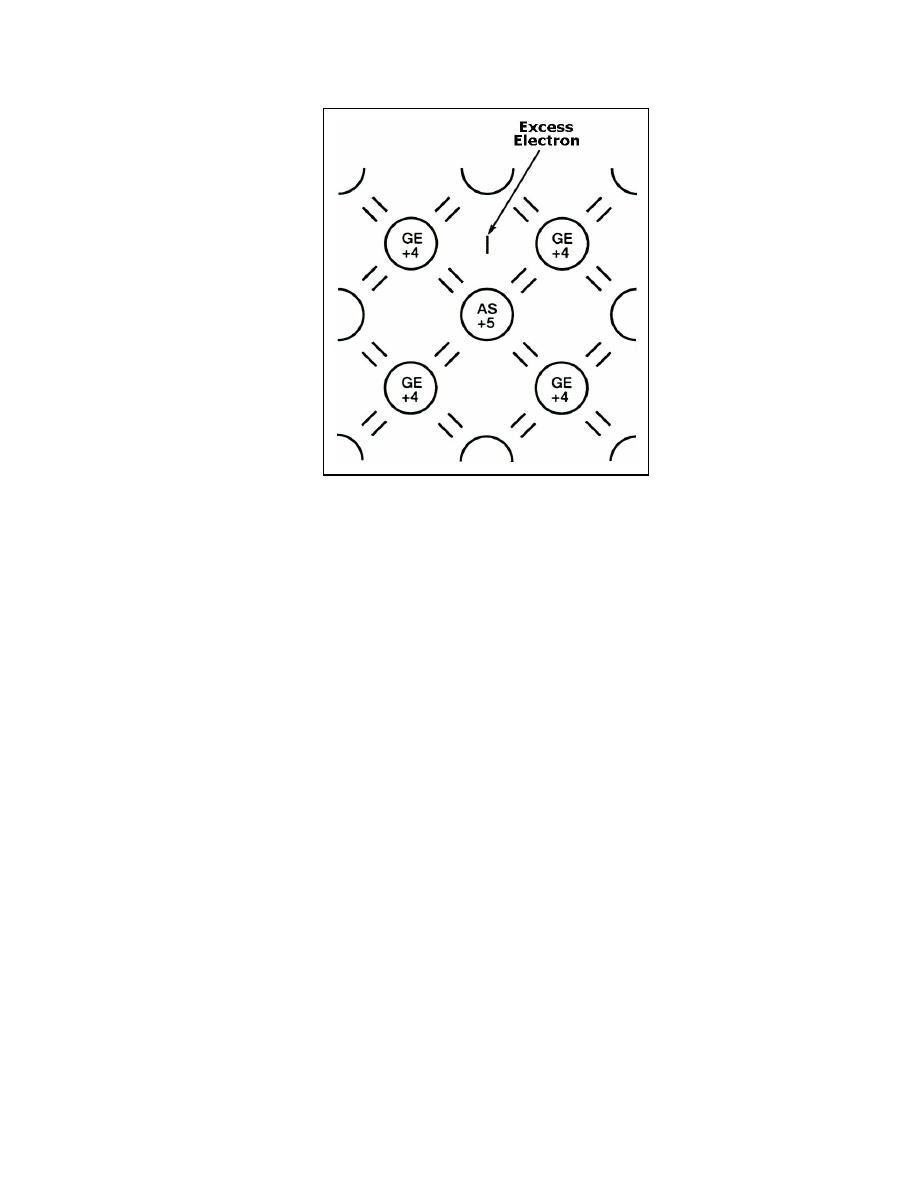
_________________________________________________________________ Semiconductor Diodes
Figure 1-10. Germanium Crystal Doped With Arsenic
P-Type Semiconductor
1-55. The second type of impurity when added to a semiconductor material tends to
compensate for its deficiency of one valence electron by acquiring an electron from its
neighbor. Impurities of this type have only three valence electrons and are called
TRIVALENT impurities. Aluminum, indium, gallium, and boron are trivalent impurities.
Since these materials accept one electron from the doped material they are also called
ACCEPTOR impurities.
1-56. A trivalent (acceptor) impurity element can also be used to dope germanium. In
this case, the impurity is one electron short of the required amount of electrons needed to
establish covalent bonds with four neighboring atoms. Therefore, in a single covalent bond
there will be only one electron instead of two. This arrangement leaves a hole in that
covalent bond. Figure 1-11 shows what happens when germanium is doped with an indium
(IN) atom. Notice, the indium atom in the figure is one electron short of the required
amount of electrons needed to form covalent bonds with four neighboring atoms and
therefore creates a hole in the structure. Gallium and boron, that are also trivalent
impurities, exhibit these same characteristics when added to germanium. The holes can
only be present in this type semiconductor when a trivalent impurity is used. Notice that a
hole carrier is not created by the removal of an electron from a neutral atom. However, it is
created when a trivalent impurity enters into covalent bonds with a tetravalent (four
valence electrons) crystal structure. The holes in the type semiconductor (P-type) are
considered the MAJORITY carriers since they are present in the material in the greatest
quantity. The electrons, on the other hand, are the MINORITY carriers.
23 June 2005
TC 9-62
1-15



 Previous Page
Previous Page
